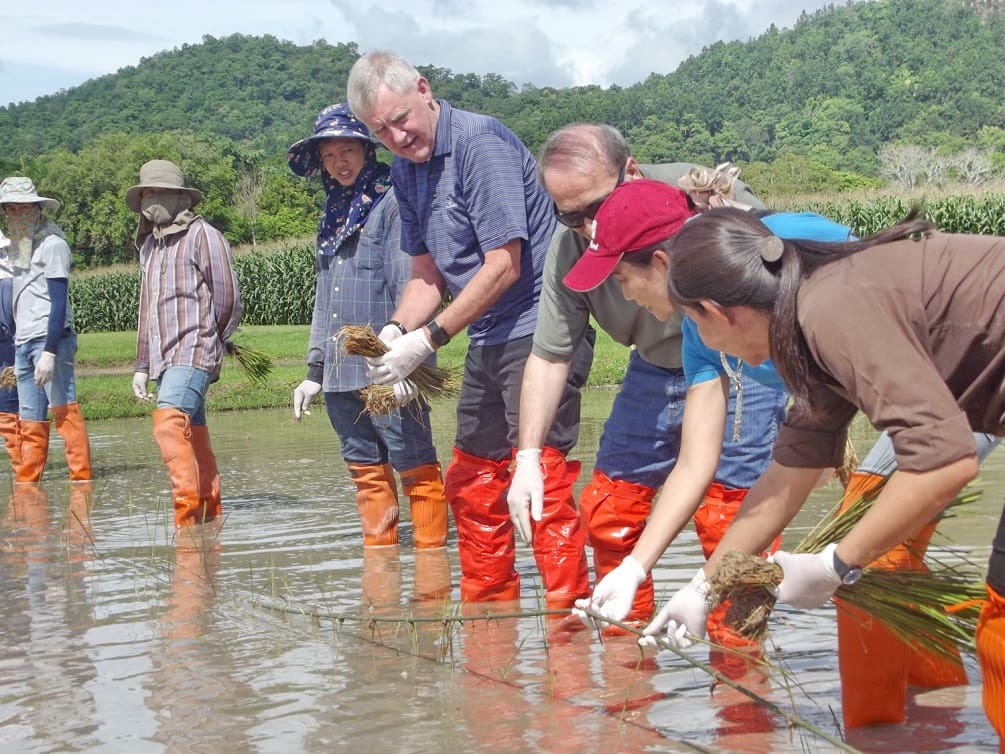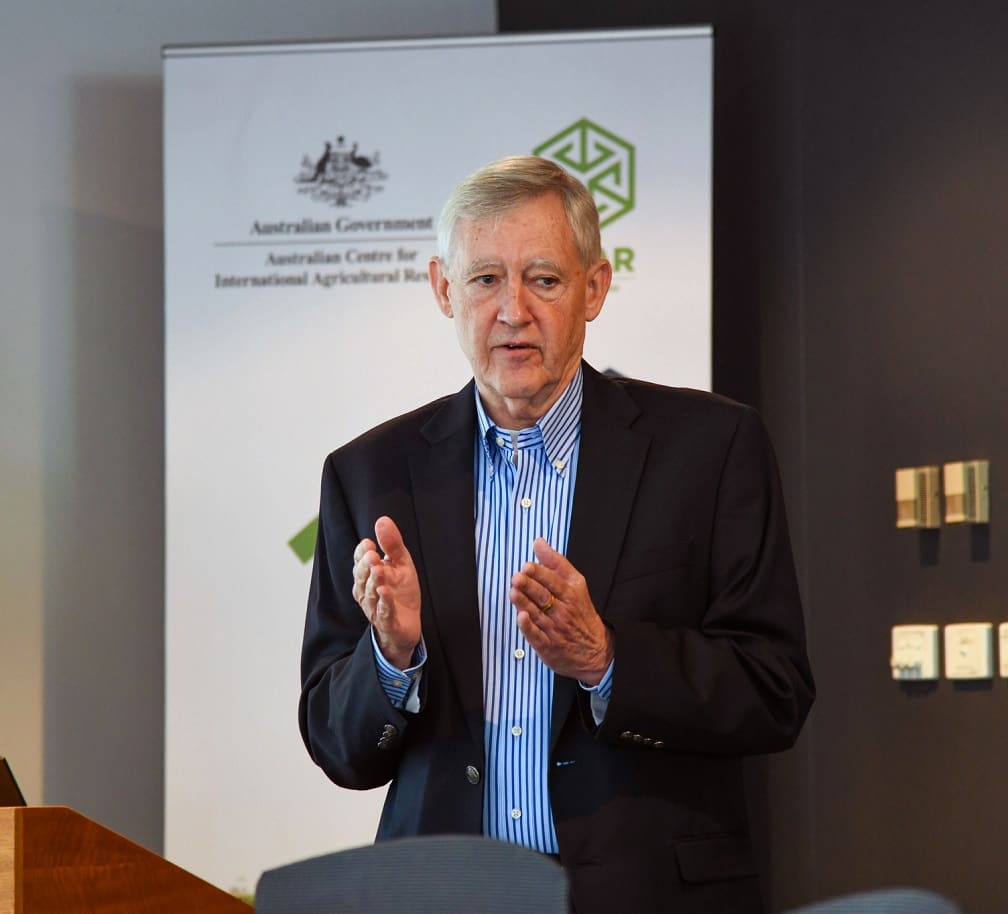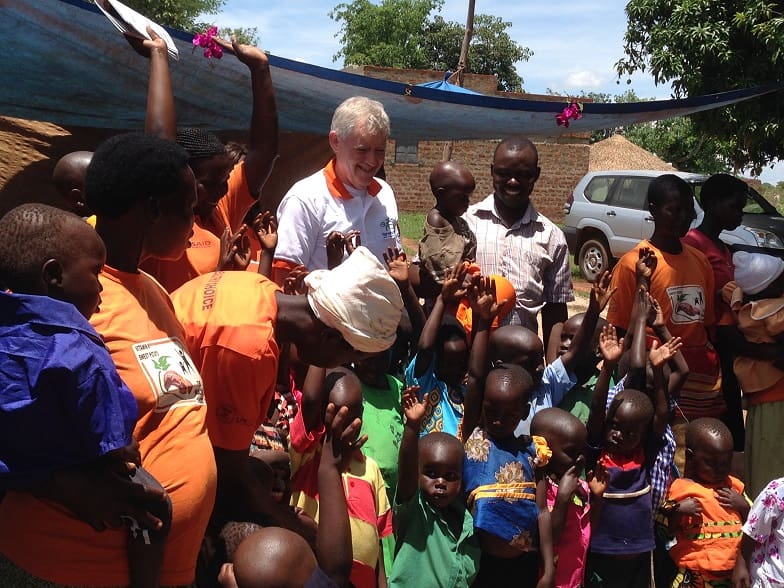AUSTRALIAN scientists have played a key role in developing crops super-charged with extra vitamins and minerals that are now being used to overcome life-threatening nutrition issues in the Third World.
Under the global initiative HarvestPlus, conventional plant breeding techniques are being used to ‘biofortify’ crops that can be grown in developing countries to counter the ‘hidden hunger’ of nutrient deficiency.
Throughout the undeveloped world it is estimated two billion people may have enough food to eat — but that food is not sufficiently nutritious, leading to illness and preventable deaths.
Introducing crops into the food chain with built-in vitamins and minerals is proving a cost-effective way of providing universal benefit to the population and a more reliable solution than the traditional vitamin and mineral supplement and food fortification programs that do not reach everyone.
Visiting Australia this week, HarvestPlus founder and Laureate of the World Food Prize – the “Nobel Prize for Agriculture”, Dr Howarth Bouis, said HarvestPlus was a cost-effective, sustainable way to address the issue of dietary deficiencies among poor people in developing countries.
“They are able to afford basic staple food, which in Asia is mainly rice and Africa it’s maize, but the prices of non-staple foods such as vegetables, fruits, pulses, animal products and fish have been rising steadily for the last 50 years,” he said.
“At the same time incomes have stagnated, making it very difficult for poor people to get the minerals and vitamins in their diet they need. So, there is a widespread problem sometimes referred to as ‘hidden hunger’ where there are vitamin and mineral deficiencies.”
Key deficiencies
Dr Bouis said the HarvestPlus program focused on addressing three main deficiencies:
- Vitamin A in Africa
- Iron in India and other parts of the world
- Zinc in South East Asia
The idea for the program evolved from work by nutritionists in the early 1990s that showed that introducing specific vitamins and minerals into the local diet vastly improved health outcomes.
At the time, a series of Vitamin A capsule distribution trials was conducted across nine countries where one group of children was given high-dose Vitamin A tablets and another group a placebo with no Vitamin A.
“They found they reduced child mortality by 23 per cent in children given Vitamin A, so they realised the problem wasn’t so much to do with calories, energy or protein, it was more to do with vitamins and minerals. The Vitamin A was important for the immune system, so that was what was leading to the mortality rates in children with deficiency,” Dr Bouis said.
“It is the same for zinc. If you don’t have enough it compromises the immune system. They attribute 450,000 deaths a year among pre-school children to zinc deficiency.
“Iron deficiency is related to cognitive ability. Children who are iron deficient when they are very young have lower IQs for the rest of their lives.”
The nutrition community at the time responded to the gap by administering Vitamin A supplements and supplements of other nutrients, and making fortified foods commercially available.
However, it prompted Dr Bouis to come up with the idea of whether it would be possible to breed plants with enhanced, in-built vitamin and mineral levels as an alternative to supplements.
“I questioned the process of spending, year after year, on the supplements and fortified foods. It was treating a problem but not solving the problem. I thought: “What if we can get the plants to do the work? Wouldn’t that be more efficient?”,” he said.
In 1993 Dr Bouis found scientists in Australia at the University of Adelaide who said it would be possible.
It then took 10 years for him to convince nutrition donors and agricultural donors to provide the funding needed to get the project off the ground.
“It finally happened in 2003 with the (Bill and Melinda) Gates Foundation putting in a $25 million grant over four year to get it up and running,” he said.
Essentially, the process for developing biofortified crops is based on traditional plant breeding.
Breeders take a high-yielding variety and cross it with a variety that is high in a mineral, such as zinc, but not necessarily high yielding. Ultimately, over a long process that may take up to 10 years, they produce a high-yielding, high-zinc crop.
The main crops being worked on under the HarvestPlus program are:
- high-zinc rice for South East Asia
- high-zinc wheat mainly for distribution in South East Asia
- high-iron pearl millet for India
- pro-Vitamin A, orange maize for Africa
- pro-Vitamin A, yellow cassava for Africa
- high-iron beans for high altitude regions in countries such as Iran and Rwanda
Variety releases
The first release of biofortified varieties into Third World countries took place in 2011-2012. Since then varieties have been released in more than 30 countries across Africa, Asia and Latin America, and in the next five years that will grow to 60 countries.
The most recent releases have been high-zinc rice into Indonesia and the Philippines.
“Our vision over time is as new varieties are coming out of agricultural research systems we piggy-back on the high-yielding crops, which are also being bred for better adaptation to climate change,” Dr Bouis said.
“Over time (the biofortified crops) will take over a higher percentage of the staple food supply in the countries where they have been introduced. Eventually most staple foods being grown in developing countries will be biofortified. The 38 million now consuming biofortified crops is just a small start toward attaining our vision.”
Nutrient levels
Dr Bouis said one of the challenges had been to convince the nutrition community that the levels of vitamins or minerals being put in the crops were sufficient.
“We commissioned 14 nutrition efficacy trials where one group of children or mothers get the biofortified crops, and a control group who eat the non-fortified crops and compare the results. They showed improvement in iron, zinc and Vitamin A status,” he said.
“More importantly we have shown improved functional outcomes. With the high-iron crops, the children had improved cognitive tests and the work performance of the women was better. They showed lower levels of sickness with the pro-Vitamin A and high-zinc crops.”
Dr Bouis said iron and zinc were trace minerals that couldn’t be seen or tasted in the food.
But with the orange maize varieties he said some behaviour change required because it was a different colour.
“You have to explain that it is orange because it is high in Vitamin A, but because it is high yielding it is the same price as the white maize. So why not buy the orange maize and protect your family for the same price?” he said.
Worldwide opportunities
While the focus has been on providing vitamin and mineral-fortified crops to the Third World, Dr Bouis said there was no reason why they didn’t have a role in developed countries.
“The deficiencies are not as widespread, not as severe because people can afford to have nutritious diets already. But, it can only help to put these into the food as well,” he said.
“There is no issue of toxicity if you get too much. When you put iron, zinc and pro-Vitamin A in plant foods, the body regulates it. If you are deficient you absorb them because you need them. If you are sufficient you don’t absorb them, they just pass through your system.
“Orange maize is now for sale in the United States and we are hoping it becomes a trend in the US to eat orange maize instead of white maize.”
The Australian Centre for International Agricultural Research (ACIAR) has been a big supporter of the program and the Australian Department of Foreign Affairs and Trade has also assisted.
HarvestPlus: https://www.harvestplus.org/






HAVE YOUR SAY